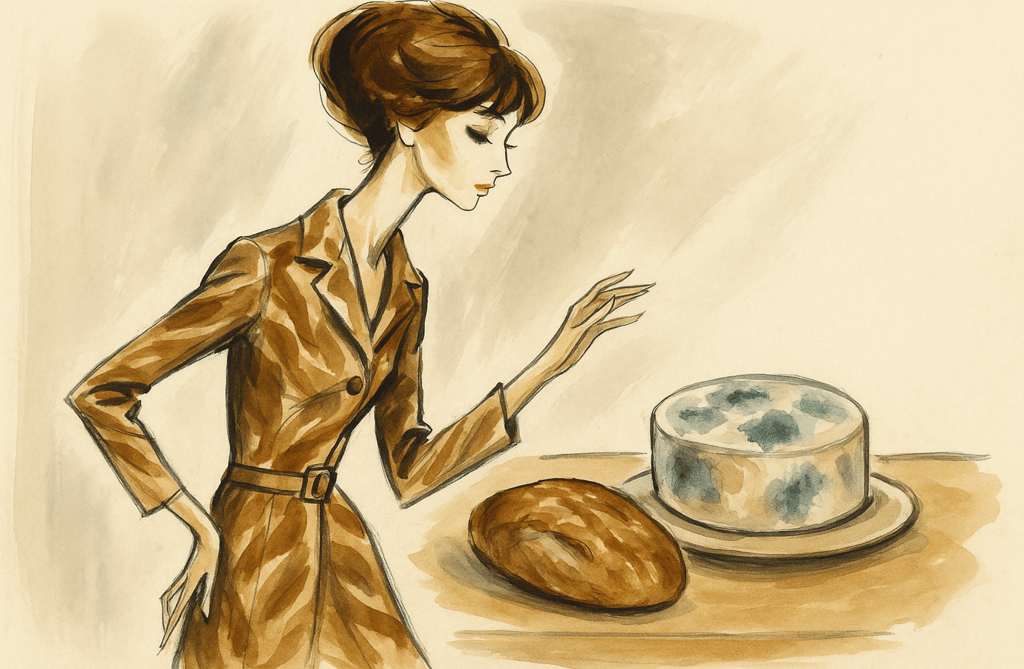Mould on the Table: When to Trust the Old Ways — and When to Let Go
Learn when mouldy food can be safely salvaged — and when it’s time to let go. A slow-living guide from Hida Dream Home blending tradition, science, and kitchen wisdom.


At Hida Dream Home, we believe food is more than fuel. It’s memory. It’s ritual. It’s a living, breathing part of home — carried in soil-stained hands, passed down in soft cloth bundles, stored in old jars lined with beeswax or gauze. But what happens when our food turns?
Not every imperfection is a warning. Not every speck of fuzz is dangerous. But some are.
So today, we lean into the quiet wisdom of our foremothers — those who knew how to cut around a bruise and when to bury the loaf. Let’s talk about mould, and the fine line between thrift and threat.
When Mould Finds Your Bread
Our grandmothers wrapped their bread in linen, tucked away in cool cellars or clay pots. They knew what we’ve forgotten: moisture invites mould. Especially in soft, store-bought loaves or plastic-sealed sourdoughs.
If you spot green or white fuzz on your bread — don’t just cut it off. Mould roots run deep, invisible to the eye. As Anna Blücher, microbiologist at Linnaeus University, explains: even if the visible patch is small, the toxin-producing threads may already have spread through the crumb.
"Figs or dates with mouldy spots — never take the risk."
What About Fruits & Vegetables?
Here the guidance is gentler, more forgiving. Firm fruits like carrots or hard cheeses may be saved by cutting away a 2 cm (centimetre) margin around the mould.
But soft fruits, like tomatoes, peaches, and berries? Once invaded, their watery flesh becomes a playground for mould. Best to compost them and start fresh.
Tip: Don’t store fruit (frukt) in plastic. A linen bag or paper wrap slows the spread.
Sugary Preserves & Marmalade
Does mould floating in your jam or marmalade (sylt or marmelad) mean the whole jar is doomed? It depends.
In low-water, high-sugar preserves — like a traditional orange marmalade — mould might not penetrate far. But when in doubt, don’t stir it back in. Discard generously.
“Det handlar ofta om mängden vatten” — “It’s often about water content,” says Blücher.
Moisture is the key to mould’s secret kingdom.
The Danger You Can’t See
Here’s the truth that chills even the most stubborn food saver: Mould doesn’t need to be visible to be dangerous.
Some strains release mycotoxins — invisible poisons that can affect the liver, gut, or immune system. These can form even before the mould appears. That’s why food safety isn’t just about appearances.
Especially risky?
Peanuts and pistachios (if improperly stored)
Figs and dates
Old grains
Dried herbs in humid jars
Mould Isn’t Always the Villain
Let’s not forget: some mould has healed us. From the cool, musty soil of ancient caves came penicillin. Blue cheese, soy sauce, and salami owe their flavour to friendly fungi.
But when it grows where it shouldn’t — in your fridge, on your apples, or creeping across leftovers — it’s time to call it what it is: a warning.
How to Keep Mould at Bay
Bread and baked goods
Wrap bread in linen, not plastic. Store in a cool pantry or bread box. Freeze half if it won’t be eaten within days.
Vegetables & fruit
Let them breathe. Use paper bags. Avoid sealed containers, especially in summer.
Preserves & opened jam
Wipe the rim. Use clean spoons. If mould appears, don’t scrape — compost the jar.
Root vegetables & mushrooms
Wrap mushrooms in paper, not plastic. Keep roots and tubers dry and aired.
A Final Word from the Cottage Table
We live in a time of excess, yet we long for the simplicity of old. And sometimes, that longing makes us want to save everything — the bruised apple, the softened garlic, the crust with a spot of green.
But true ancestral wisdom isn’t just about saving — it’s about knowing what to save.
So wrap your bread in cloth. Air your root cellar. Honour the food that still serves you. And let go — with grace — of the rest.
